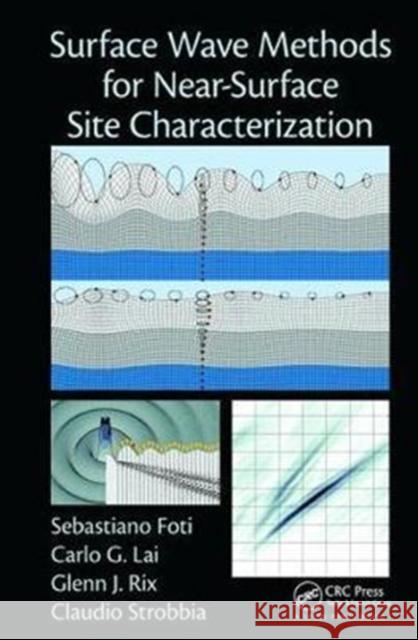Surface Wave Methods for Near-Surface Site Characterization » książka
Surface Wave Methods for Near-Surface Site Characterization
ISBN-13: 9781138077737 / Angielski / Miękka / 2017 / 487 str.
Surface Wave Methods for Near-Surface Site Characterization
ISBN-13: 9781138077737 / Angielski / Miękka / 2017 / 487 str.
(netto: 269,94 VAT: 5%)
Najniższa cena z 30 dni: 277,00
ok. 22 dni roboczych
Dostawa w 2026 r.
Darmowa dostawa!
Develop a Greater Understanding of How and Why Surface Wave Testing Works
Using examples and case studies directly drawn from the authors’ experience, Surface Wave Methods for Near-Surface Site Characterization addresses both the experimental and theoretical aspects of surface wave propagation in both forward and inverse modeling. This book accents the key facets associated with surface wave testing for near-surface site characterization. It clearly outlines the basic principles, the theoretical framework and the practical implementation of surface wave analysis. In addition, it also describes in detail the equipment and measuring devices, acquisition techniques, signal processing, forward and inverse modeling theories, and testing protocols that form the basis of modern surface wave techniques.
Review Examples of Typical Applications for This Geophysical Technique
Divided into eight chapters, the book explains surface wave testing principles from data measurement to interpretation. It effectively integrates several examples and case studies illustrating how different ground conditions and geological settings may influence the interpretation of data measurements. The authors accurately describe each phase of testing in addition to the guidelines for correctly performing and interpreting results. They present variants of the test within a consistent framework to facilitate comparisons, and include an in-depth discussion of the uncertainties arising at each stage of surface wave testing.
- Provides a comprehensive and in-depth treatment of all the steps involved in surface wave testing
- Discusses surface wave methods and their applications in various geotechnical conditions and geological settings
- Explains how surface wave measurements can be used to estimate both stiffness and dissipative properties of the ground
- Addresses the issue of uncertainty, which is often an overlooked problem in surface wave testing
- Includes examples with comparative analysis using different processing techniques and inversion algorithms
- Outlines advanced applications of surface wave testing such as joint inversion, underwater investigation, and Love wave analysis
Written for geotechnical engineers, engineering seismologists, geophysicists, and researchers, Surface Wave Methods for Near-Surface Site Characterization offers practical guidance, and presents a thorough understanding of the basic concepts.











